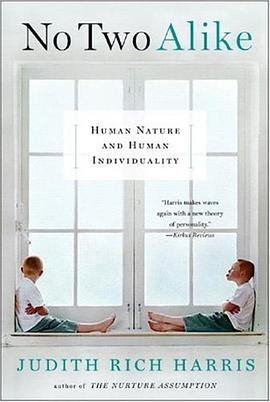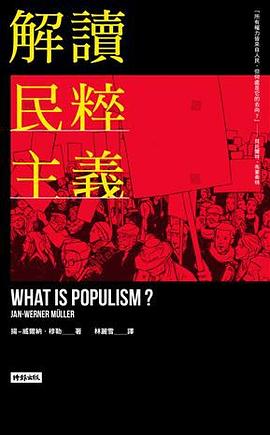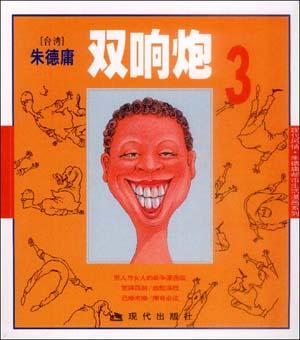Portrait of the Artist as a Young Man
内容简介
The Wordsworth Classics covers a huge list of beloved works of literature in English and translations. This growing series is rigorously updated, with scholarly introductions and notes added to new titles.
A classic novel which follows Stephen Dedalus as he progresses from boyhood to his coming of age in Ireland at the beginning of the 20th century, describing his sexual awakening, his intellectual development and his rebellion against Roman Catholicism. From the author of Dubliners, Ulysses and Finnegan's Wake.
Perhaps Joyce's most personal work, A Portrait Of The Artist As A Young Man depicts the intellectual awakening of one of literature's most memorable young heroes, Stephen Dedalus. Through a series of brilliant epiphanies that parallel the development of his own aesthetic consciousness, Joyce evokes Stephen's youth, from his impressionable years as the youngest student at the Clongowed Wood school to the deep religious conflict he experiences at a day school in Dublin, and finally to his college studies where he challenges the conventions of his upbringing and his understanding of faith and intellectual freedom. James Joyce's highly autobiographical novel was first published in the United States in 1916 to immediate acclaim. Ezra Pound accurately predicted that Joyce's book would "remain a permanent part of English literature," while H.G. Wells dubbed it "by far the most important living and convincing picture that exists of an Irish Catholic upbringing." A remarkably rich study of a developing young mind, A Portrait Of The Artist As A Young Man made an indelible mark on literature and confirmed Joyce's reputation as one of the world's greatest and lasting writers.
A masterpiece of subjectivity, a fictionalized memoir, a coming-of-age prose-poem, this brilliant novella introduces Joyce's alter ego, Stephen Daedelus, the hero of Ulysses, and begins the narrative experimentation that would help change the concept of literary narrative forever. It describes Stephen's formative years in Dublin; as Stephen matures, so does the writing, until it sparkles with clarity. The style presents numerous, almost insurmountable, problems for the oral interpreter, particularly one with the limited vocal range of John Lynch. But Lynch pays no attention to the problems. Instead, he identifies so completely with Daedelus, throws himself so lustily into the book, that it is as if the passionate young artist himself is bursting out of your speakers. Y.R. Winner of AUDIOFILE Earphones Award
Autobiographical novel by James Joyce, published serially in The Egoist in 1914-15 and in book form in 1916; considered by many the greatest bildungsroman in the English language. The novel portrays the early years of Stephen Dedalus, who later reappeared as one of the main characters in Joyce's Ulysses (1922). Each of the novel's five sections is written in a third-person voice that reflects the age and emotional state of its protagonist, from the first childhood memories written in simple, childlike language to Stephen's final decision to leave Dublin for Paris to devote his life to art, written in abstruse, Latin-sprinkled, stream-of-consciousness prose. The novel's rich, symbolic language and brilliant use of stream-of-consciousness foreshadowed Joyce's later work. The work is a drastic revision of an earlier version entitled Stephen Hero and is the second part of Joyce's cycle of works chronicling the spiritual history of humans from Adam's Fall through the Redemption. The cycle began with the short-story collection Dubliners (1914) and continued with Ulysses and Finnegans Wake (1939).
James Joyce was born on February 2, 1882, in Rathgar, Dublin. He was one of ten children. He was educated at Jesuit schools and at University College, Dublin. A brilliant student of languages, Joyce once wrote an admiring letter in Norwegian to Henrik Ibsen. He went to Paris for a year in 1902, where he discovered the novel Les Lauriers Sont Coupes by Edouard Dujardin, whose stream-of-consciousness technique he later credited with influencing his own work. Following his mother's death, he returned to Ireland for a brief stay, and then left with Nora Barnacle, with whom he spent the rest of his life. They had two children, George and Lucia Anna, the latter of whom suffered in later years from schizophrenia. (Joyce and Nora were formally married in 1931.)
Joyce lived in voluntary exile from Ireland, although Irish life continued to provide the raw material for his writing. In Trieste, he taught English and made the acquaintance of the Italian novelist Italo Svevo. His first book, the poetry collection Chamber Music, appeared in 1907. The publication of the short story collection Dubliners was delayed repeatedly, and eventually the Irish publisher destroyed the proofs for fear of libel action; this prompted Joyce's final visit to Ireland in 1912. The book was eventually published in 1914 and greeted with acclaim by Ezra Pound, whose enthusiastic support helped Joyce establish a literary career. In 1915 Joyce and Nora moved to Zurich, and at the end of World War I they settled in Paris. His only play, Exiles, was published in 1918 and staged in Munich the same year without success. A Portrait of the Artist as a Young Man, an autobiographical novel (developed from the embryonic, posthumously published Stephen Hero) tracing the artistic development of Stephen Dedalus, was published in 1916. By this time Pound and W. B. Yeats had succeeded in obtaining for Joyce some financial support through the Royal Literary Fund, but he continued to be in need of money for most of his life.
Joyce began to suffer from serious vision difficulties due to glaucoma; he would eventually be forced to undergo many operations and long periods of near-blindness. Ulysses, the epic reconstruction of the minutiae of a single day in Dublin--June 16, 1904--was serialized in The Little Review starting in 1918, and published in Paris (by the American Sylvia Beach through her bookstore Shakespeare & Company) in 1922, on his fortieth birthday. Due to censorship it remained unavailable in the United States until 1934 and in the United Kingdom until 1936. Except for a small volume of verse, Pomes Penyeach (1927), Joyce published nothing thereafter except extracts from the enormous work in progress that emerged as Finnegans Wake in 1939. In his later years he was closely associated with the young Samuel Beckett, whom he had met in 1928. After the German invasion of France, Joyce and Nora moved back to Zurich, where he died on January 13, 1941.
length: (cm)19.8 width:(cm)12.6
......(更多)
作者简介
詹姆斯·乔伊斯(1882—1941)是爱尔兰著名的现代派小说家,他历时七载完成了代表作《尤利西斯》(1922)。小说的主人公布卢姆是都柏林一家报纸的广告推销员,作者用许多逼真的细节描写这个彷徨苦闷的小市民和他寻欢作乐的妻子莫莉以及寻找精神之父的青年学生斯蒂芬这三个人一昼夜中的经历,实质上是现代西方社会中人的孤独与绝望的写照。作者把小说的主人公和荷马史诗《奥德修记》中的英雄尤利西斯(即奥德修斯)相比拟.把他在都柏林的游荡和尤利西斯的十年漂泊相比拟。
乔伊斯在《尤利西斯》中广泛运用了“意识流“的创作手法,形成一种崭新的风格,成为现代派小说的先驱。他不仅在遣词造句方面刻意创新,而且运用了大量的典故、引语和神话。小说出版后,其中某些词句被认为“淫秽”而受到指摘,因此长期被禁止在英美发行,直到1933年这部巨著才得以公开与英美读者见面。
译者研究本书多年,其译文忠实流畅,而且还对众多典故、引语等作了详尽的注释。
......(更多)
目录
......(更多)
读书文摘
我不想伺候我不再信仰的东西,不管那称之为我的家,我的祖国或者我的教会:我将在一种生活或艺术方式中尽量自由自在地、尽量完整地表达我自己,我将使用我允许自己使用的唯一的武器来自卫——那就是沉默,流放和狡黠。
......(更多)






